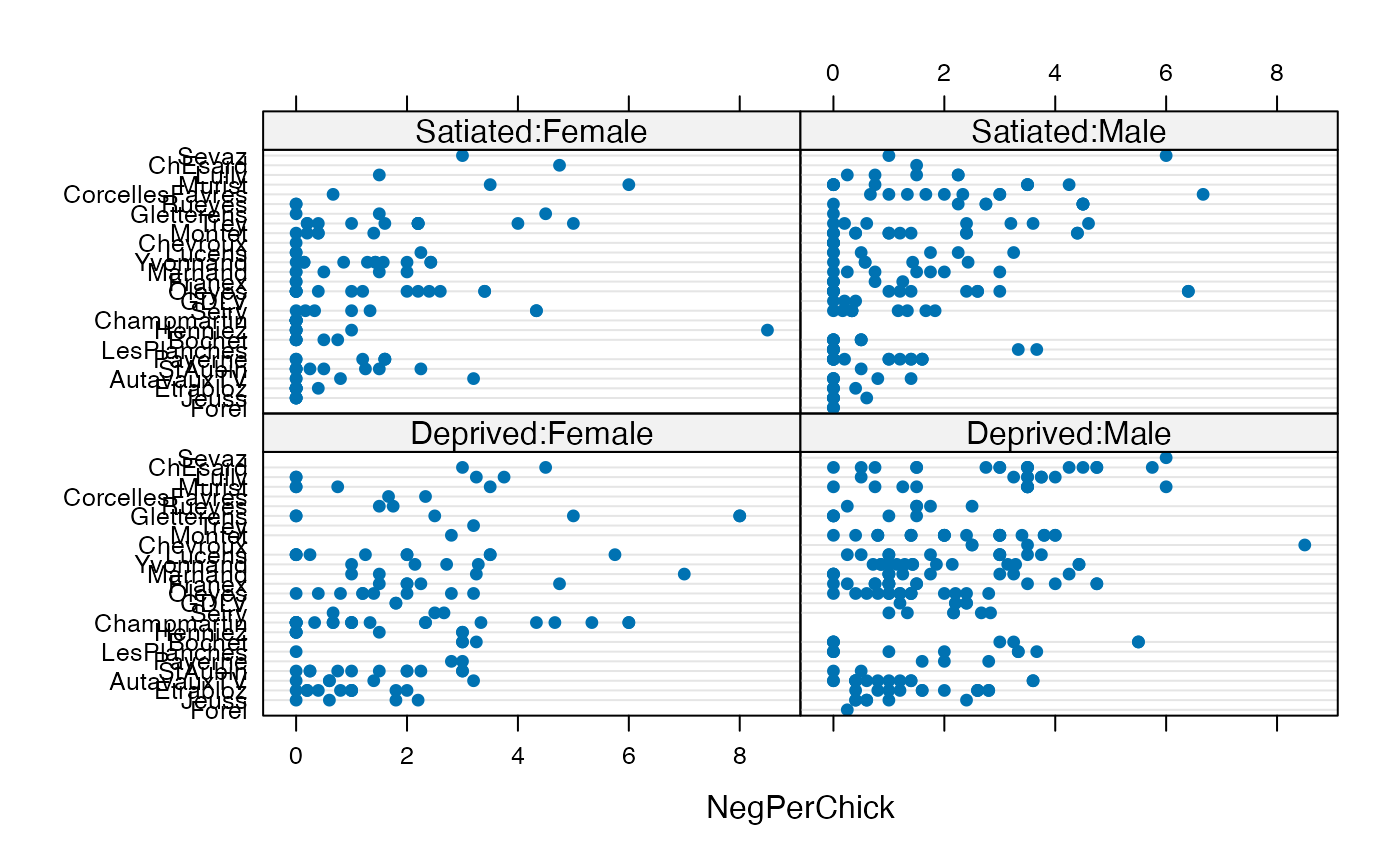Begging by Owl Nestlings
Owls.RdBegging by owl nestlings
data(Owls)Format
The Owls data set is a data frame with
599 observations on the following variables:
Nesta factor describing individual nest locations
FoodTreatment(factor) food treatment:
DeprivedorSatiatedSexParent(factor) sex of provisioning parent:
FemaleorMaleArrivalTimea numeric vector
SiblingNegotiationa numeric vector
BroodSizebrood size
NegPerChicknumber of negotations per chick
Source
Roulin, A. and L. Bersier (2007) Nestling barn owls beg more intensely in the presence of their mother than in the presence of their father. Animal Behaviour 74 1099--1106. doi:10.1016/j.anbehav.2007.01.027 ; http://www.highstat.com/Books/Book2/ZuurDataMixedModelling.zip
References
Zuur, A. F., E. N. Ieno, N. J. Walker, A. A. Saveliev, and G. M. Smith (2009) Mixed Effects Models and Extensions in Ecology with R; Springer.
Note
Access to data kindly provided by Alain Zuur
Examples
data(Owls, package = "glmmTMB")
require("lattice")
#> Loading required package: lattice
bwplot(reorder(Nest,NegPerChick) ~ NegPerChick | FoodTreatment:SexParent,
data=Owls)
 dotplot(reorder(Nest,NegPerChick) ~ NegPerChick| FoodTreatment:SexParent,
data=Owls)
dotplot(reorder(Nest,NegPerChick) ~ NegPerChick| FoodTreatment:SexParent,
data=Owls)
 if (FALSE) {
## Fit negative binomial model with "constant" Zero Inflation :
owls_nb1 <- glmmTMB(SiblingNegotiation ~ FoodTreatment*SexParent +
(1|Nest)+offset(log(BroodSize)),
family = nbinom1(), zi = ~1, data=Owls)
owls_nb1_bs <- update(owls_nb1,
. ~ . - offset(log(BroodSize)) + log(BroodSize))
fixef(owls_nb1_bs)
}
if (FALSE) {
## Fit negative binomial model with "constant" Zero Inflation :
owls_nb1 <- glmmTMB(SiblingNegotiation ~ FoodTreatment*SexParent +
(1|Nest)+offset(log(BroodSize)),
family = nbinom1(), zi = ~1, data=Owls)
owls_nb1_bs <- update(owls_nb1,
. ~ . - offset(log(BroodSize)) + log(BroodSize))
fixef(owls_nb1_bs)
}